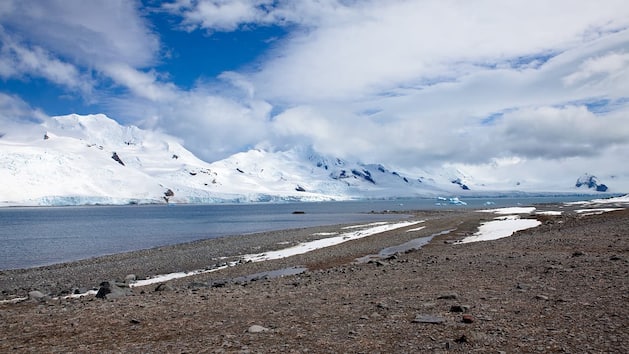The extent of the Antarctic sea ice shrank to a new record low in December. This is reported by the German Weather Service reports the German Weather Service and refers to data from the Alfred Wegener Institute.
Accordingly, the sea ice coverage of the Antarctic in the southern winter remained well below the long-term average and was comparable to the previous record minimum of 2017. The current extent is given as 4.23 million square kilometers. On January 3, 2017, it was 4.96 million square kilometers. December 2022 was particularly noticeable, with an exceptionally strong decline being recorded.
Antarctic sea ice typically peaks in September or October and troughs in February. The cold waters around Antarctica allow rapid sea ice formation in winter. At its maximum extent in September, sea ice coverage is generally between 18 and 19 million square kilometers. Over the summer, the area shrinks to around 3 million square kilometers by February.
Last year, the “Meereisportal” reported that the monthly mean values in the past seven years, with the exception of 2021, were consistently below the long-term trend for the period 1979 to 2022.
Compared to the long-term average of the years 2003 to 2014, there was less sea ice, especially in the northern Weddell Sea up to the Cosmonaut Sea and in the Bellingshausen and Amundsen Seas.
The “Sea Ice Portal” is an initiative of the Helmholtz Association “Regional Climate Change” (REKLIM) in cooperation with the Institute for Environmental Physics at the University of Bremen with the aim of making all important and current information on the subject of sea ice publicly accessible.
Sea ice extent is one of the most important aspects of the polar climate system. For this reason, more and more attention has been paid to it in recent years. It has been observed that the average sea ice area in the Arctic has decreased massively and rapidly by around 4 percent per decade.
The retreat of the Arctic ice adds to the warming trend in the Northern Hemisphere because the reflectivity of the ground without ice cover decreases and leads to a higher absorption of the incident solar radiation (ice-albedo feedback).
In contrast to the Arctic, the sea ice area and sea ice volume around Antarctica had not shown any significant trend until recently, despite general global warming over the past 40 years.
From around 2015, however, ice extent in all Antarctic waters declined quite abruptly and sharply, reaching a record low for the first time in 2017.
In the four years that followed, sea ice extent was consistently below the average for the years 1981 to 2010. In the current southern summer, Antarctic sea ice may now be heading for the largest negative anomaly ever observed in the satellite era.
The original of this article “The ice cover of the South Pole is melting to a new record minimum” comes from Spektrum.de.
